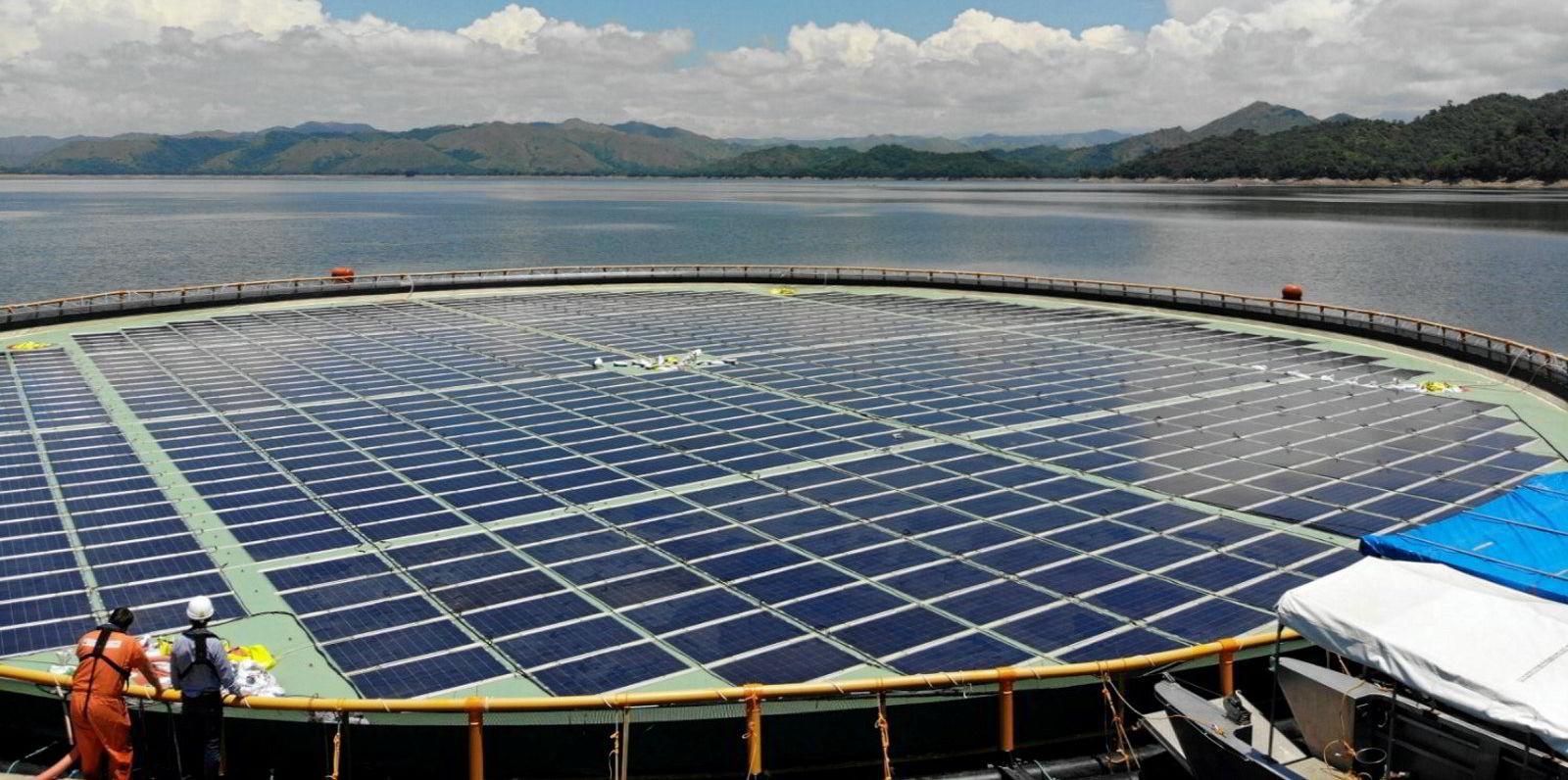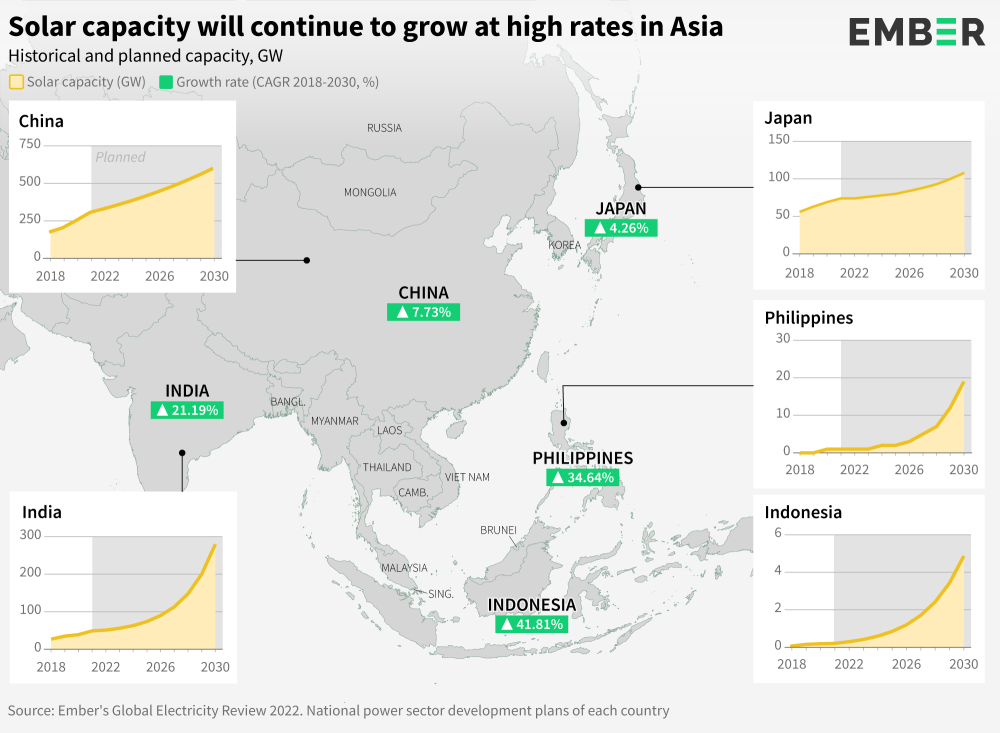
Five of Asia’s biggest economies are expected to see exponential growth of solar, positioning the region to become a global hub of solar power, according to independent energy think tank Ember.
Ember analyzed existing national power sector development plans across China, Japan, Indonesia, India, and the Philippines. It found that solar capacity is expected to grow an average of 22% annually across the five economies.
Of the five, the fastest solar capacity growth rates are expected in Indonesia – 41.81% – and the Philippines – 34.64%:

Indonesia plans to add 4.68 gigawatts (GW) of solar capacity by 2030. If implemented, this would mean that Indonesia would have built 25 times more capacity than its current level of 180 MW.
Asia Solar Growth
But Indonesia’s share of solar electricity generation is less than 0.2% – the lowest rate of G20 countries – and that’s far beneath what the country is capable of. For context, Indonesia is the world’s fourth most populous nation and the 10th largest economy in terms of purchasing power parity, according to the World Bank.
China doesn’t have an isolated goal for its future solar capacity additions, but for perspective, China’s goal is to install 1,200 GW of both wind and solar by 2030. Ember notes that solar power has accounted for a 50% share of China’s capacity additions on average between 2012 and 2021.
Ember’s Muyi Yang, Asia senior electricity policy analyst, said:
China could reach a total capacity of at least 600 GW of solar by 2030. We believe this to be a cautious estimate, as some analysts estimate that China could reach its 1,200 GW wind and solar goals as soon as 2026.
The Philippines legislated in 2019 that it would add 18 GW of solar by 2030, and the country’s largest solar company, Solar Philippines, is working to surpass the 10 GW mark by 2025. If achieved, the 2030 mark would be almost 12 times more than the country’s current level of 1,370 MW.
Ember asserts that the Philippines’ new administration also seems set on reviewing several key energy systems planning and management policies. That will be crucial for both the rapid construction of solar farms and grid preparation.
Isabella Suarez, Southeast Asian energy analyst at the Centre for Research on Energy and Clean Air (CREA), said:
The Philippines is certainly on track to meet its target with all 18 GW of its 2030 target already accounted for in the proposed project pipeline.
India is planning to achieve 300 GW of solar by 2030, a sixfold increase on current levels. If the country meets its goal, it would have one of the largest solar fleets by the end of the decade.
According to Ember’s state-by-state analysis conducted in April, India added a record 14 GW of new solar capacity in the 12 months leading up to March 2022, beating its previous record of 9.4 GW installed in 2018.
One of India’s key challenges for managing its solar growth includes investing in the stabilization of its grid and comprehensive policy reform to accommodate the expansion of rooftop solar.
In 2021, solar accounted for 9.3% of Japan’s annual electricity generation, up from 8.5% the previous year. Japan has a forecast of between 154 and 180 GW of installed solar by 2030, according to Japanese PV industry consulting company RTS Corporation, but Ember puts it at just over 100 GW.
Japan increased its renewable power generation target overall from the previous 22-24% to 36-38% by 2030. Renewables are forecast to account for 34.6% of Japan’s generation mix in 2030, falling just short of its goal.
UnderstandSolar is a free service that links you to top-rated solar installers in your region for personalized solar estimates. Tesla now offers price matching, so it’s important to shop for the best quotes. Click here to learn more and get your quotes. — *ad.
FTC: We use income earning auto affiliate links. More.






Comments